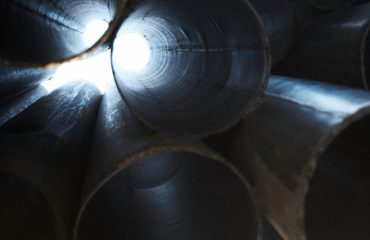In industries where equipment faces harsh environments and significant impacts, the reliability of connections is paramount. From aerospace to automotive, and from industrial automation to medical devices, the need for shock-resistant connection systems is critical. Failure can lead to catastrophic consequences, ranging from equipment malfunction to complete system failure. This post delves into the crucial aspects of designing, implementing, and understanding these resilient systems.
Understanding the Impact of Shock and Vibration
Shock and vibration are significant factors influencing the lifespan and reliability of connections. Shock refers to a sudden, high-intensity impact, while vibration involves continuous oscillatory motion. Both can cause fatigue, loosening, and ultimately, failure of connections. The severity of the impact depends on several factors including the magnitude of the force, the duration of the impact, and the frequency of the vibrations. Understanding these forces is crucial in selecting appropriate materials and design strategies for shock-resistant connection systems.
Analyzing the specific shock and vibration profiles of the application is vital during the design phase. This often involves sophisticated simulations and testing methodologies to accurately predict the stresses on the connection. Factors like the operating environment, the weight of the connected components, and the expected lifespan all play a role in determining the necessary level of shock resistance.
Materials Science: The Foundation of Shock Resistance
The choice of materials is fundamental to the success of a shock-resistant connection system. High-strength materials like titanium alloys, stainless steel, and advanced polymers are frequently employed due to their superior mechanical properties. Titanium alloys offer a high strength-to-weight ratio, making them ideal for aerospace applications. Stainless steel provides excellent corrosion resistance, crucial in many industrial settings. Advanced polymers, such as high-performance thermoplastics and elastomers, offer flexibility and energy absorption capabilities, helping to dampen vibrations and reduce the impact of shock.
Beyond the base materials, surface treatments also play a significant role. Techniques like plating, coating, and anodizing can enhance corrosion resistance, wear resistance, and overall durability. These surface modifications can significantly improve the longevity and reliability of the connections, especially in harsh environments.
Design Strategies for Robust Connections
Effective design strategies are crucial for maximizing shock resistance. Several key principles guide the design of these systems. One common approach is the use of interlocking mechanisms, such as bayonet mounts or threaded connections with locking features. These mechanisms ensure a secure and stable connection, minimizing the risk of loosening or separation under shock or vibration. Another crucial element is the incorporation of vibration damping materials. Elastomeric components, such as bushings or dampers, can effectively absorb vibrational energy, preventing its transmission to the connection.
Careful consideration of the geometry of the connection is also vital. Designing for even stress distribution across the connection interface minimizes the risk of localized stress concentrations, which are common points of failure. Finite element analysis (FEA) is frequently used to simulate the stress distribution under various loading conditions, allowing engineers to optimize the design for maximum robustness.
Testing and Validation: Ensuring Reliability
Rigorous testing is essential to validate the shock resistance of a connection system. A variety of tests are employed, including impact tests, vibration tests, and fatigue tests. Impact tests simulate the effects of sudden shocks, measuring the connection’s ability to withstand high-intensity impacts without failure. Vibration tests assess the connection’s response to continuous oscillatory motion, identifying potential weaknesses under prolonged vibration. Fatigue tests evaluate the connection’s ability to withstand repeated loading cycles, mimicking the real-world conditions experienced by many systems.
These tests are typically conducted according to industry standards and specifications, ensuring consistent and reliable evaluation. The results of these tests provide critical data for validating the design and identifying areas for improvement. This iterative process of design, testing, and refinement is critical for developing truly reliable shock-resistant connection systems.
Emerging Trends and Future Developments
The field of shock-resistant connection systems is constantly evolving, driven by the demands of increasingly demanding applications. Smart connectors, incorporating sensors and data logging capabilities, are emerging, providing real-time monitoring of connection integrity and environmental conditions. This allows for predictive maintenance, reducing downtime and improving overall system reliability. Advanced materials, such as carbon nanotubes and graphene, are also being explored for their potential to enhance the strength and durability of connectors.
Additive manufacturing (3D printing) offers exciting possibilities for creating complex and customized connection designs. This technology allows for the creation of intricate geometries and the integration of multiple materials, leading to more robust and efficient connection systems. Further research into vibration damping materials and advanced simulation techniques will continue to refine the design and performance of shock-resistant connection systems, ensuring greater reliability and safety in demanding applications.
Tags: shock resistant connectors, impact resistant connections, vibration damping, secure connections, robust systems




